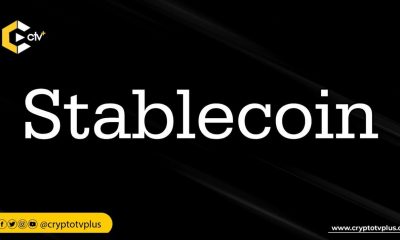FEATURED
Are Algorithmic Stablecoins stable & doomed to fail?

Stablecoins have gained significant attention in the world of cryptocurrencies due to their ability to provide stability amidst the volatility of digital assets. However, behind the scenes, developing and ensuring the stability of stablecoins involves navigating through regulatory frameworks, technical requirements, and various types of stablecoin models.
At the London Blockchain Conference 2023, industry experts shared their views on stablecoins and importantly on algorithmic Stablecoins.
James Belding, CEO of Tokenized, views stablecoins as a proof of concept and a stepping stone toward central bank digital currencies (CBDCs). James asserted that algorithmic stablecoin is a flawed concept and “is doomed to fail.” “The problem with algorithmic stable coins is, you can’t really see the future and you can’t really tame real risk, it’s impossible at a fundamental level,” he said.
Niels Van Den Bergh, CEO mintBlue emphasized that algorithmic stablecoins fall under the crypto camp, which implies that their stability is often compromised during market volatility. Also, he does not consider algorithmic stablecoins truly stable due to their reliance on technocratic solutions.
Overall, a stablecoin should be backed by reserves to be considered stable such as gold or fiat currencies. Bernhard Müller, General Manager & Chairman Centi Ltd. emphasized that algorithmic stablecoins and wrapped-coins should not be labeled stablecoins, as they lack true stability.
Under the current regulatory frameworks, the question arises if a blockchain-based structure is necessary for issuing stablecoins. Bernhard pointed out the advantages of having a public ledger, such as transparency, separating issuer and custodian roles, and enhanced security. Niels highlighted a recent European Central Bank report that recognized the capabilities of utxo-based blockchains, further emphasizing the potential benefits of blockchain technology for stablecoins.
Niels also highlights the impact of new legislation, such as the MiCA (Markets in Crypto Assets) regulation, on stablecoin development in Europe. He cited a recent proof of concept conducted by the European Central Bank, highlighting the capabilities and advantages of utxo-based blockchains for CBDCs.
Moreover, to mitigate risks and challenges, alongside regulatory frameworks and audits, public and open ways of verifying reserves become essential. This allows anyone to check the validity of claims made by stablecoin issuers. The experts emphasized the importance of de-risking and making stablecoins more stable while understanding the residual risk associated with the issuer.
Stablecoins are gaining attention and will likely be embraced by established financial players. James suggested that pursuing stablecoins as a product option depends on individual business needs and the value one can provide. Adoption, usage by developers, and growth in volume and velocity were identified as key factors for stability and success.
Read also;
What Nostr needs to beat YouTube
What do you think of this article? Share comments below.

























1 Comment